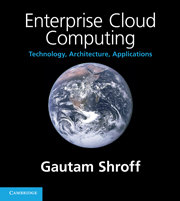Summary
In today's world virtually all available information on any technical topic is just a few clicks away on the web. This is especially true of an emerging area such as cloud computing. So why write a book, and, who should read this book and why?
Every few years a new ‘buzzword’ becomes the rage of the technology world. The PC in the 80s, the internet in the 90s, service-oriented architecture in the early 2000s, and more recently ‘cloud computing’: By enabling computing itself to be delivered as a utility available over the internet, cloud computing could transform enterprise IT. Such a transformation could be as significant as the emergence of power utilities in the early twentieth century, as eloquently elucidated in Nicholas Carr's recent book The Big Switch.
Over the years large enterprises have come to rely on information technology to run their increasingly complex business operations. Each successive technology ‘revolution’ promises tremendous gains. It falls upon the shoulders of the technical architects in the IT industry to evaluate these promises and measure them against the often significant pain that is involved in adapting complex IT systems to new computing paradigms: The transition to cloud computing is no exception.
So, this book is first and foremost for technical architects, be they from IT departments or consulting organizations.
- Type
- Chapter
- Information
- Enterprise Cloud ComputingTechnology, Architecture, Applications, pp. xi - xiiiPublisher: Cambridge University PressPrint publication year: 2010



